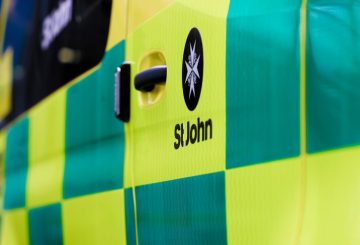Matagumpay na natapos ang proyekto ng New Zealand Bird Atlas pagkatapos ng limang taon, mula 2019 hanggang 2024. Napansin ng komunidad na kasangkot sa proyekto ang 309 species ng ibon sa panahong ito. Ang pinakakaraniwang species ay ang pahirini/chaffinch, manu pango/blackbird, at tauhou/silvereye.
Ang proyektong ito, isa sa pinakamalaking mga inisyatiba sa agham sa komunidad ng New Zealand, ay nakikipag-ugnay ng Wildlife Management International Limited para sa Birds New Zealand. Mahigit 441,000 checklist at 145,000 oras ng trabaho ang naiambag ng mga boluntaryong mga birdwatchers sa buong bansa. Ginamit nila ang platform ng agham ng komunidad, eBird, upang i-upload ang kanilang mga obserbasyon.
Ang layunin ng proyekto ay upang obserbahan ang lahat ng posibleng species ng ibon sa loob ng grid square na sumasaklaw sa buong bansa, ayon sa Atlas Coordination Team Leader na si Dan Burgin. Mahigit sa 3,232 grid square, bawat isa 10 x 10km, ang itinakda upang gabayan ang mga surveyor.
Natapos ang proyekto nang mahigit 97.3% ng mga parisukat na ito ang nakatanggap ng data ng obserbasyon ng ibon. Ang mga pagsisikap ng komunidad ay sinusuportahan ng data na na-upload ng Department of Conservation, maraming mga konseho ng rehiyon, Environment Canterbury, Environment Southland, at iba pang mga organisasyon. Pinondohan din ng Toi Toi Wines ang anim na mga ekspedisyon ng Atlas upang i-target ang mga lugar na hindi gaanong nasuri at dagdag
Nilalayon ng proyekto na mangolekta ng napapanahong impormasyon tungkol sa mga species ng ibon sa New Zealand upang ipaalam sa mga desisyon sa pangangalaga sa hinaharap at maiwasan ang mas maraming species mula sa Ang layuning ito ay nakamit sa malawak na saklaw at bilang ng mga checklist na isinumite.
Ang data mula sa proyektong ito ay magpapahintulot sa paghahambing ng pamamahagi ng ibon sa mga nakaraang dataset ng proyekto ng Atlas, na nagsisiwalat ng mga pagbabago sa buong bansa sa pamamahagi ng ibon
Ang proyektong ito ng Atlas ang unang naging isang digital-first project, salamat sa isang pakikipagsosyo sa Cornell Lab of Ornithology. Pinapayagan ng eBird app ang real-time na pagpasok at mga output ng data, na nagbibigay-daan sa komunidad na direktang magpasok ng mga obserbasyon at sundin ang mga resulta sa buong proyekto.
Sa kabila ng mga hamon tulad ng pandaigdigang pandemya at tumataas na gastos sa pamumuhay, nag-ambag ang komunidad ng isang kahanga-hanga at makabuluhang Higit pang mga resulta ang ipapakita sa taunang kumperensya ng Birds New Zealand at sa isang E-book na ilathala sa susunod na taon. Pinuri ng pangulo ng Birds New Zealand, si Bruce McKinlay, ang tagumpay ng komunidad, na nagsasabi na magkakaroon ito ng pangmatagalang positibong epekto sa pananaliksik at pangangalaga ng ibon sa New Zealand.





























































